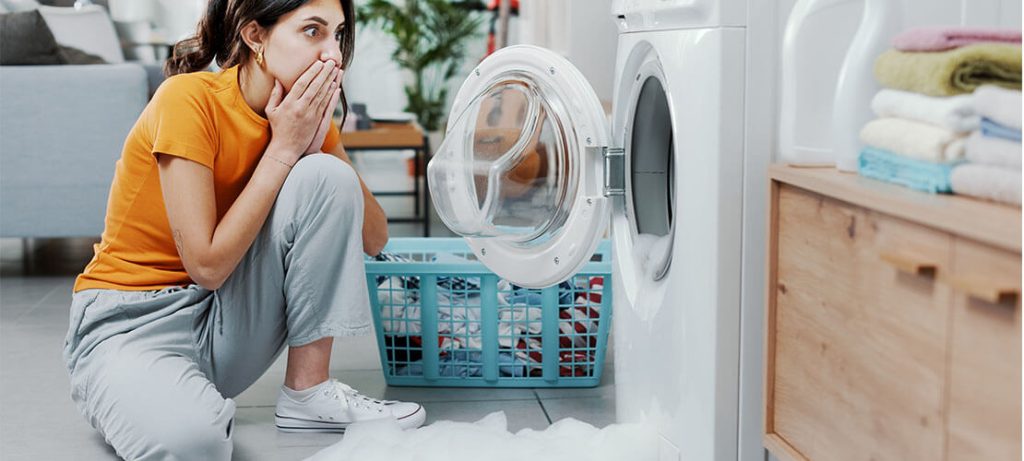Keeping your washer from overflowing is as easy as identifying the cause and fixing it. In this blog post, we’ll show you what to do if your washer overflows.
Inspect The Hoses
Inspect the hoses connecting the washer to the faucet to see if they are kinked or blocked, which can cause the machine to overflow. If you see any kinks, leaks, or blockages, the hose may need to be replaced.
Check The Agitator
If your washer has an agitator which is a post in the center of the washing basket that helps clothes move around during the cycle, check that it is not stuck in the “on” position. Make sure the agitator can move freely up and down. If it gets stuck, try jiggling it back and forth until it loosens up.
Check The Pump
Make sure the pump isn’t clogged. The pump removes water from the washing basket during the spin cycle. Clogged pumps cause water to overflow. Remove clothes or objects from the washing basket and unscrew the plate at the bottom of the machine to clean the pump. You will now be able to access the pump housing. Clean out any debris that may be clogging it with a brush, then reassemble everything and cycle again.
Check The Drainage Tub
It is important to ensure that nothing is blocking your drainage tube. The drain tube runs from the pump housing to a drain or laundry sink, so a blockage here will cause water to back up and overflow from the machine. Turn off your washing machine’s power (to prevent an electric shock) before checking this. Remove any objects that may be blocking the drainage tube (e.g., clothing, towels, etc.) and disconnect the machine from its power source. If you see any blockages inside the drainage tube, carefully remove them with a wire hanger or similar object. After clearing out any obstructions, reattach your washing machine to its power source and run another load of laundry to determine if this solves the problem.
Problem With Washer’s Lid
If your washer’s lid doesn’t fit properly, water can spill out and overflow your laundry room. The lid may also not line up correctly with the base of your washer. To prevent the lid from closing completely and spilling more water than it should while you wait for a professional (or until you can order a new lid), you can prop it open with a book or similar heavy object while it is washing while you wait for your machine to be repaired.
Overflowing washers can be alarming, but you don’t necessarily need to buy a new one. Whenever your washer is overflowing, it is a good idea to call in a professional. If your need washer repair services within the Tampa area, call Capital Appliance Repair Tampa at (813) 437-5133 or contact us today.

